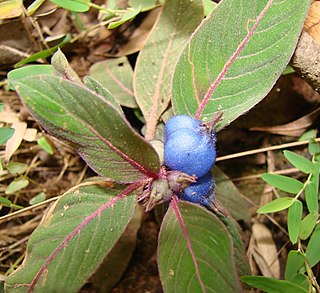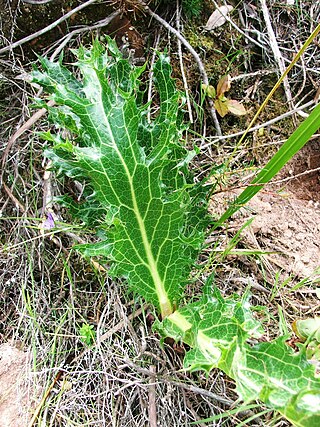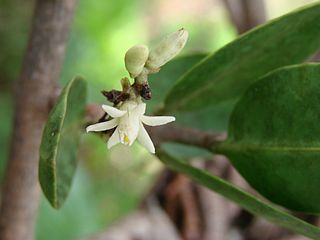
Bignonia is a genus of flowering plants in the family Bignoniaceae. Its genus and family were named after Jean-Paul Bignon by his protégé Joseph Pitton de Tournefort in 1694, and the genus was established as part of modern botanical nomenclature in 1753 by Carl Linnaeus. Species have been recorded from the southern USA, Central to most of South America.

Coccocypselum is a genus of flowering plants in the family Rubiaceae. It is native to Mexico, Central America, the West Indies and South America. All species of the genus Coccocypselum are herbaceous with fleshy, blue or purple fruits, and 4-petaled flowers.

Kohautia is a genus of flowering plants in the family Rubiaceae. They are native to tropical areas of Asia, Africa, and Madagascar. Thirty-one species are known. The type species for the genus is Kohautia senegalensis.

Luehea is a genus of trees in the family Malvaceae.

Mansoa is a genus of tropical, flowering vines in the family Bignoniaceae.

Spermacoceae is a tribe of flowering plants in the family Rubiaceae and contains about 1346 species in 57 genera. Its representatives are found in the tropics and subtropics.

Mitracarpus is a plant genus in the coffee family Rubiaceae. Girdlepod is a common name for some species in this genus.

Amphilophium is a genus of flowering plants in the family Bignoniaceae, native to South America. Amphilophium crucigerum has escaped from cultivation elsewhere, and has become an invasive weed in Australia.

Galianthe is a genus of flowering plants in the family Rubiaceae. The genus is found from Mexico to tropical America.
Tessiera is a genus of flowering plants belonging to the family Rubiaceae.

Lichtensteinia is a genus of flowering plants belonging to the family Apiaceae. It is also the only genus in the tribe Lichtensteinieae, subfamily Apioideae.
Lucya is a monotypic genus of flowering plants belonging to the family Rubiaceae. It only contains one known species, 'Lucya tetrandra'(L.) K.Schum.
Sommera is a genus of flowering plants belonging to the family Rubiaceae.

Psyllocarpus is a genus of flowering plants belonging to the family Rubiaceae. It is an endemic genus of Brazil found in Amazonia, Caatinga, and Cerrado. In 1979 the genus was revised by Kirkbride into two sections, Psyllocarpus sect. Psyllocarpus and P. sect Amazonica, based on geographic distribution and morphology. Plants of the World Online treats the genus as a synonym of Tapanhuacanga.
Romanschulzia is a genus of flowering plants belonging to the family Brassicaceae.
Esterhazya is a genus of flowering plants belonging to the family Orobanchaceae.

Passovia is a genus of flowering plants belonging to the family Loranthaceae.

Gaudichaudia is a genus of flowering plants belonging to the family Malpighiaceae.
Tapanhuacanga is a genus of flowering plants in the family Rubiaceae. It includes 11 species endemic to Brazil.
Planaltina is a genus of flowering plants in the family Rubiaceae. It includes four species native to Brazil, ranging from northern to west-central and southeastern Brazil.













